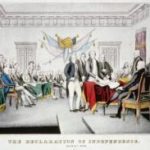Classifying Arguments is a SCOTUS case study strategy in which students are given arguments from each side of a case and tasked with identifying whether each argument supports the petitioner or the respondent. In this classroom-ready activity, students will examine arguments from Flowers v. Mississippi, which asks: Did the Mississippi Supreme Court err in how it applied Batson v. Kentucky in this case? An answer key is also available for download.
Flowers v. Mississippi (2019)
Did the Mississippi Supreme Court err in how it applied Batson v. Kentucky in this case? This case summary shows how the Supreme Court answered this question in 2019.
Lesson Plan: The Emmett Till Story
In this lesson, students will view videos to hear eyewitness accounts of what occurred while Emmett Till was visiting family in Mississippi. They will learn about the timeline of events, how they unfolded and the subsequent trial for the men involved. Students will also consider the impact this had on the Civil Rights movement and the legacy.
Freedom Summer 1964
Freedom Summer is a digital learning tool (available on the web or as an app) for teachers and students that explores key events surrounding this time in America’s history and the impact of the civil rights movement on civil rights legislation. Players predict the outcomes of civil and congressional actions and discover how the events are intertwined. Students have the opportunity to view informative intro and outro videos and analyze 20 primary sources depicting images of civil rights events. Analysis of a variety of primary sources and supplemental information leads students to identify varying perspectives and potential outcomes. Freedom Summer is formatted for all types of computers and mobile devices, including Chromebooks, and can be found on the website or in any app store for download.
The Civil Rights Movement: Major Events and Legacies
James Patterson provides an overview of the movement, reminding us that the roots lay in the early twentieth century with the founding of the NAACP and the National Urban League and that efforts to secure equality continued through the 1940s and the postwar years. Patterson shows the variety of arenas in which the modern civil rights movement operated, from the courtrooms and legislative halls of the nation to the streets of Birmingham and the highways of Alabama and Mississippi. Free registration for students and teachers required to access resource.
The Bill of Rights: Debating the Amendments
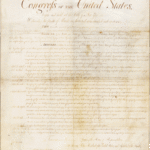
In this lesson, students will examine a copy of twelve possible amendments to the United States Constitution as originally sent to the states for their ratification in September of 1789. Students will debate and vote on which of these amendments they would ratify and compare their resulting “Bill of Rights” to the ten amendments ratified by ten states that have since been known by this name.
The Constitution: Counter Revolution or National Salvation
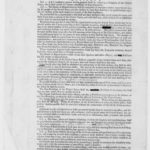
It is Fall 1787. The Federal Convention has recently concluded its closed door meetings in Philadelphia and presented the nation with a new model for the government. It is now up to each special state convention to decide whether to replace the Articles of Confederation with this new constitution. The debate is passionate and speaks directly to what the founding fathers had in mind in conceiving this new nation. Does this new government represent salvation or downfall?
The Constitution: Drafting a More Perfect Union
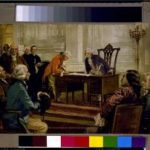
Students will analyze an unidentified historical document and draw conclusions about what this document was for, who created it, and why. After the document is identified as George Washington’s annotated copy of the Committee of Style’s draft constitution, students will compare its text to that of an earlier draft by the Committee of Detail to understand its evolution.
The Declaration of Independence: Created Equal?
The Declaration of Independence: From Rough Draft to Proclamation
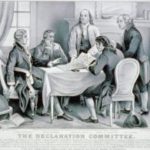
Students will analyze an unidentified historical document and draw conclusions about what this document was for, who created it, and why. After the document is identified as Thomas Jefferson’s “original Rough draught” of the Declaration of Independence, students will compare its text to that of the final document adopted by Congress on July 4, 1776 and discuss the significance of differences in wording.
